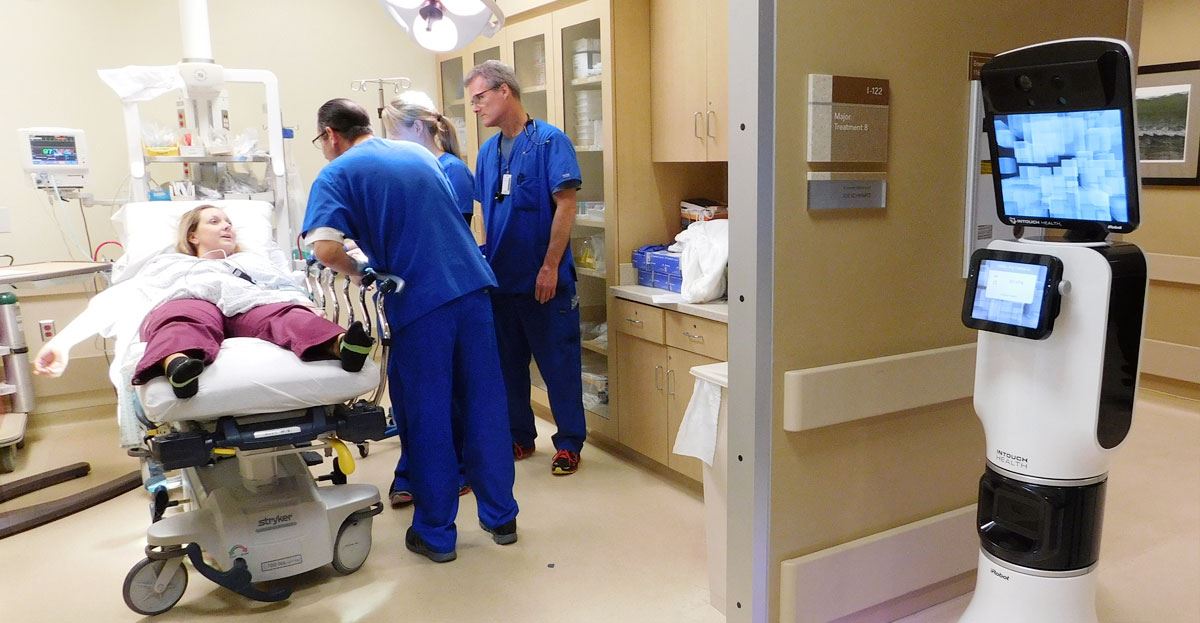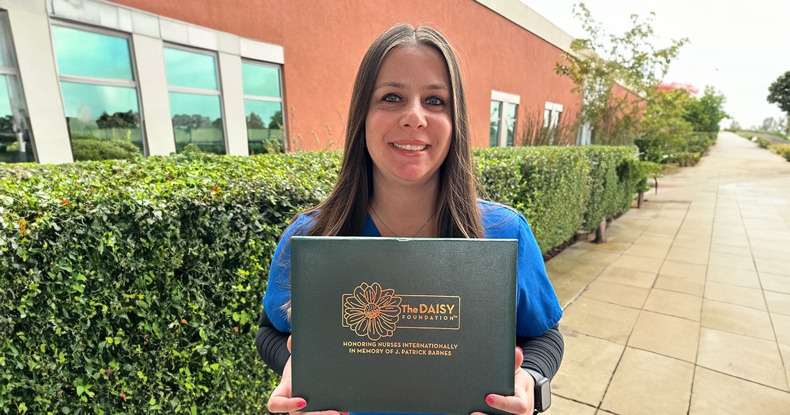Robot On Call
- Category: LVMC Updates
- Posted On:
- Written By: Yvette Cop, Assistant Nurse Executive

With stroke among the leading causes of death on the Central Coast, having the Acute Stroke Ready Hospital designation and a specially trained “Code Stroke” team will allow rapid assessment of a patient, ultimately saving lives. Time is particularly critical with the onset of stroke: physicians have a shortened time frame to diagnose and begin treatment in order to improve outcomes for patients.
Because the Lompoc Valley does not have a neurologist available round- the-clock, patients thought to be having a stroke are often transferred out of town to a larger hospital with more advanced treatment capabilities. LVMC’s telemedicine agreement with Cottage will now allow more patients to remain at the hospital and in their own community for recovery.
“I am very proud of the tremendous work our staff recently accomplished to become an ‘Acute Stroke Center’ facility,” said CEO Jim Raggio. “Our commitment to participate in the countywide stroke system validates LVMC’s strategic efforts to continuously provide our community state-of-the-art healthcare.”
A stroke occurs when a blood vessel that carries oxygen to the brain ruptures or clogs. The disease is the fourth-leading cause of death in the U.S.
With the new designation, when a potential stroke patient arrives at the Emergency Department, the attending physician and medical staff order lab tests and a CT scan to determine the best course of treatment. During a “Code Stroke” call, a teleneurology consult is activated for a neurologic exam.
“Immediate access to a stroke expert helps enable the Emergency Department physician to make timely decisions on medical treatment and possible transport to a larger, comprehensive center capable of providing more advanced treatment,” explained Dr. Thomas J. Clark, Regional Stroke Director of the Stroke and Neurovascular Center of Central California.
The consultations with Cottage Hospital’s Teleneurology Network are accomplished via a “robot” from the Goleta-based InTouch Health. Once a Code Stroke is initiated, the robot — its “head” is a computer monitor — disengages from an electrical docking station near the Emergency Department and glides to the treatment room. The robot is built with autonomous navigation technology so it won’t bump into people or equipment and is pre- programmed with a layout of the hospital.
Once the robot arrives in the patient room, a neurologist appears remotely on the high-resolution computer screen, beginning a two-way live conversation with the patient and medical staff in Lompoc. The computer is advanced enough to allow the remote doctor to read a patient’s chart, zoom in to check their eyes for dilated pupils and read data on equipment near the patient bed.
The Code Stroke program at LVMC is being coordinated by Assistant Nurse Executive Yvette Cope.
“At LVMC, we continuously strive to improve our services to provide the highest quality of care for patients within our community,” Cope said. “Stroke is the second leading cause of death in Santa Barbara County. Telemedicine services for neurology and educating our staff on the acute treatment of stroke is only a start for LVMC in our efforts to decrease the stroke death rate. LVMC plans to educate the community in the coming months on stroke prevention to prevent their loved ones from the devastating effects that a stroke can have.”
The “Code Stroke Response Team” includes an Emergency Department physician and registered nurse, a CT technologist, a respiratory therapist, phlebotomist, pharmacist, registration staff, house supervisor, medical surgical charge nurse and select others. The specially trained team works with a clearly defined timeline — a system that has been repeatedly drilled at the hospital for several months with “mock” patients.
As part of the Code Stroke assessment, medical staff administer a National Institutes of Health Stroke Scale, such as recording a patient’s level of consciousness; ability to answer simple questions; ability to follow eye gaze commands; ability to show teeth or raise eyebrows on command and ability to move legs and arms, for example.
All those commands being initiated by the onsite medical staff test a patient’s neurological functioning and can be seen by the remote physician, ultimately helping with diagnosis. The remote doctor can access the robot via a desktop computer, laptop or even an iPad.
In the Emergency Department, a specially marked “Stroke Box” contains all assessment and reference tools for the nursing and medical staff. Essentially a large tool box, it contains items such as stroke guidelines; NIH stroke scale; an “Explaining Stroke” handout for patient and family; a timer/ stopwatch; IV start kits; portable pulse oximeter and a dosing card for a medicine called tPA (tissue plasminogen activator), which may be used for some stroke patients.
During one recent test of the robot, using a certified nursing assistant as a patient, the remote physician asked the fake stroke patient to lift her leg and to say a few simple sentences. The doctor, not getting the view she wanted, asked on-site nurses to lower the patient’s bed rail.
Stocked with specific medical equipment, the robot also can be linked to live patient information, such as vital signs and imaging results.
Because the robot doesn’t have mechanical arms, if it ventures into the corridors of the hospital, it will be accompanied by medical staff, so doors can be opened.
“Teleneurology programs are important because neurologists who are capable and available to provide acute care for stroke in the emergency room are a limited resource,” Dr. Clark said. “Many small community hospitals do not have neurologists on their on-call panel at all. Telemedicine, specifically teleneurology, enables neurologists with expertise in treating stroke to evaluate and assist in treatment of patients with acute stroke ‘remotely.’”
In just the first few weeks of the robot being used, seven stroke patients were treated, Cope said. Of those, two patients were able to remain at LVMC rather than being shipped to another facility as they would have been in the past.






